Telework
If your employer has determined that telecommuting is feasible for your workplace and/or job duties, employees who can work from home should do so.
State and local laws may mandate telecommuting in some industries for a limited time period.
General Travel
Follow CDC travel guidance to protect yourself and others during travel to and from work and on business trips.
Wash your hands before you leave for work and when you arrive at work, as described in the course. Bring sanitizing wipes and hand sanitizer with at least 60% alcohol if you are unable to wash your hands at your destination.
During travel, practice social distancing by keeping at least six (6) feet from others — for example, when you are waiting at a bus station or selecting seats on a train.
Wear face coverings in public settings, like on public and mass transportation, particularly when required by law.
Your employer may adjust work shifts to permit commuting during less busy times, consistent with business needs.

Consider using transportation options that minimize close contact with others (e.g., biking, walking, driving, or riding by car either alone or with household members).
Individuals who have an increased risk of severe illness from COVID-19 should consider the risks and benefits of non-essential travel.

-
Avoid gathering in groups, and stay out of crowded spaces when possible, especially at transit stations and stops.
-
Consider skipping a row of seats between yourself and other riders if possible.
-
Enter and exit buses through rear entry doors if possible.
-
After you leave the transit station or stop, use hand sanitizer containing at least 60% alcohol.
Public Transportation
In addition to the general principals listed above, you should:
As much as possible, avoid touching frequently touched surfaces such as kiosks, digital interfaces such as touchscreens and fingerprint scanners, ticket machines, turnstiles, handrails, restroom surfaces, elevator buttons, and benches.
If you must touch these surfaces, as soon as you can, wash your hands or use hand sanitizer, as described in the course.
Use touchless payment and no-touch trash cans and doors when available. Exchange cash or credit cards by placing them in a receipt tray or on the counter rather than by hand, if possible.
When possible, consider traveling during non-peak hours when there are likely to be fewer people.
Rideshare, carpool, taxi, and for-hire vehicle passengers
In addition to the general principals listed above, you should:
Don’t ride in a vehicle if the driver or other passengers who don’t live with you are not properly wearing face coverings.
Avoid contact with surfaces frequently touched by passengers or drivers, such as the door frame and handles, windows, and other vehicle parts.
If you must touch these surfaces, as soon as you can, wash your hands or use hand sanitizer, as described in the course.
Don’t accept free water bottles and avoid touching magazines or other items that may be provided to passengers.
Use touchless payment when available.
Limit the number of passengers in the vehicle to only those necessary.

Avoid shared rides where multiple passengers are picked up who are not in the same household.
-
Sit as far as possible from the driver, such as in the rear seat diagonally across from the driver. In larger vehicles, such as vans and buses, sit in the back seat so you can remain at least six feet away from the driver.
-
Ask the driver to improve the vehicle’s ventilation if possible — for example, by opening the windows or setting the air ventilation/air conditioning on non-recirculation mode.




